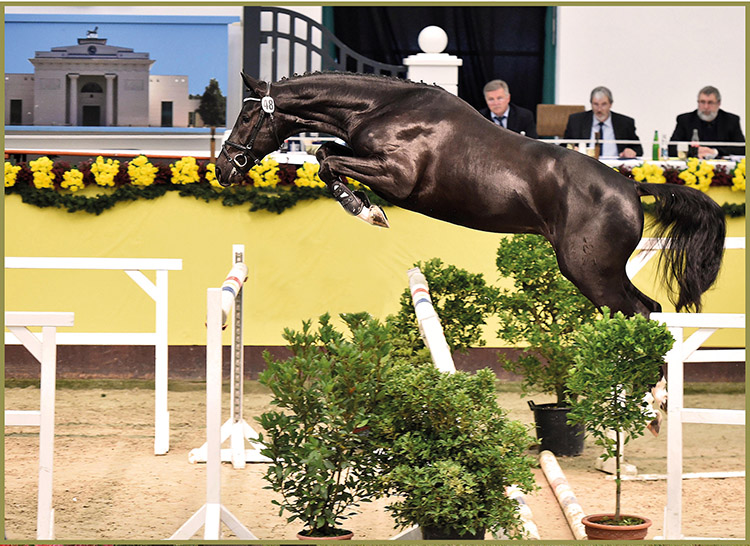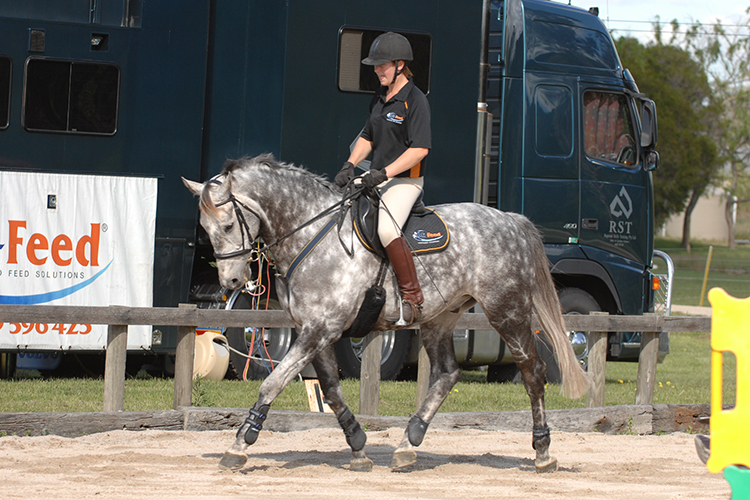 A brilliant lesson is one of those magical moments. A moment when the three vital ingredients come together… Take one talented, well-prepared horse, one intelligent and highly motivated student with equestrian feel, and add a brilliant, involved, enthusiastic and insightful instructor who passionately cares about the craft of riding and sit back and watch the chemistry bubble…
A brilliant lesson is one of those magical moments. A moment when the three vital ingredients come together… Take one talented, well-prepared horse, one intelligent and highly motivated student with equestrian feel, and add a brilliant, involved, enthusiastic and insightful instructor who passionately cares about the craft of riding and sit back and watch the chemistry bubble…
Amy Graham has been one of the surprise packets on this year’s World Cup Showjumping circuit, bursting onto the scene with her imported Dutch grey gelding, Transatlantic, for a third in the World Cup at Toowoomba (that was only their third WC start!) and a third in the Silver Final at Elysian Fields.
But Amy doesn’t only have a talented horse, she is wise enough to listen to one of Australia’s finest jumping coaches, Michelle Strapp. Michelle was a Grand Prix competitor herself, and brings to her art of teaching a knowledge of what it is like to be in the competition arena with the adrenalin flowing plus a theoretical base honed by her time with George Sanna and George Morris…
In the middle of the EI outbreak, with the World Cup circuit abandoned, Amy shifted camp from her home in Arthurton on South Australia’s Yorke Peninsula, to David and Michelle Strapp’s training centre in Victoria’s Beaconsfield.
Like her mentors, the two Georges, Michelle has a wonderful way of explaining herself, and while recognizing the complexity of the challenges involved, she is also able to break it down into manageable chunks for her student to digest.
And as with George and George, it all comes down to good work on the flat…
“When Amy started with me, she had ridden a lot of hot horses, quite buzzy horses, so her tendency was always to have them a little short, and a little running,” Michelle recalls. “When she moved onto this horse, he is a horse that has a super attitude, he is really brave, really careful, but he had a tendency to get short in the neck, and he would be very crooked. He used to jump everything with a bit of a twist. He would throw his right shoulder out, and he travelled like that. He travelled on two tracks all the time to the left, which made his canter short and mincey, so what she was having trouble with was related lines – not being able to ride the distances with a bigger canter.”
You can still see it in the warmup, the grey gelding wants to hold his neck short and tight and bounce along the ground… Michelle is encouraging Amy to slow the movement down, to let the horse loosen up.

“It was a whole learning procedure for Amy because she has gone from hot horses where she rides with no leg and a tight arm, then trying to learn the balance between hand a leg, and how to teach this horse to be straighter, and yet be more ground covering without running.”
“It has been a gradual training process of teaching Amy to feel how much hand you need to stop the front legs getting fast, how much leg do you need to get the hindleg to become bigger, so the horse can use every part of his body. When Amy got him he might not have been the scopiest machine but he was only using 20% of his body – he was stiff, he was tight, didn’t take much rein.”
Like a lot of good instructors, Michelle is ready to demonstrate what she wants in the saddle: “I rode the horse for a week to try and get him softer in the neck so that he would take more rein, become more ground covering, and he started to feel like a World Cup horse.”
“It is just a gradual process of teaching people that feel. It is that grey area in riding. Not getting to the point where you have too much hand and he won’t come through from behind – but still pushing him through enough with enough contact to make him rounder… the grey area.”
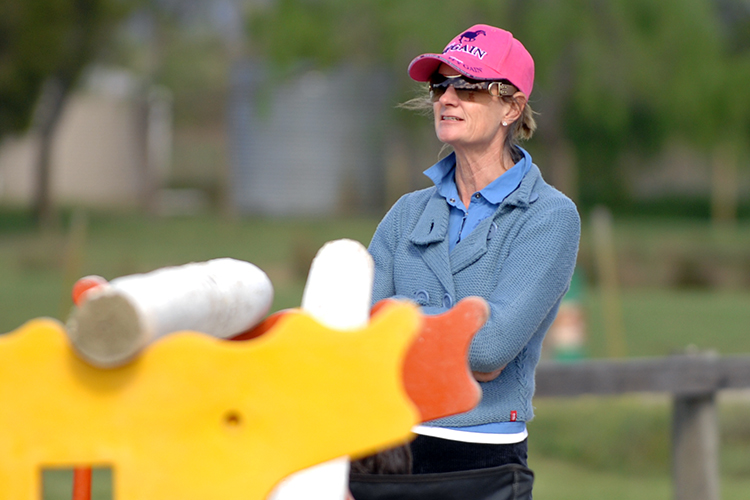
It seems that Amy is getting a good handle on that ‘grey area’, the gelding has started to slow, started to lengthen… Now Michelle is working on the straight bit.
“Slow the trot down, slow the front legs, and tuck his left hind. What we’ve been doing is a little shoulder fore to the left, and even a little baby renvers to the left, so that Amy learns to straighten him by tucking that left hind leg, but not letting him fall over his right shoulder. Not letting him get into a false shoulder in, just with neck bend. So Amy has been learning a little shoulder fore on the left rein and on the other, a little baby travers, because it was the opposite, he’d leave the left side still short, and throw his hindquarters out.”
Over and over again, the teacher emphasises that we are not doing the dressage to get points from a dressage judge – it’s to improve the jump…
“Now the fences are coming straighter off the ground, which allows the horse to use a lot more jump. He was losing half his jump – especially down a line. In a line, he’d jump to the right, so when you landed his balance had fallen right and then the rider had to work to get going. That makes the distances long. But now he is starting to learn what a straight horse is…”
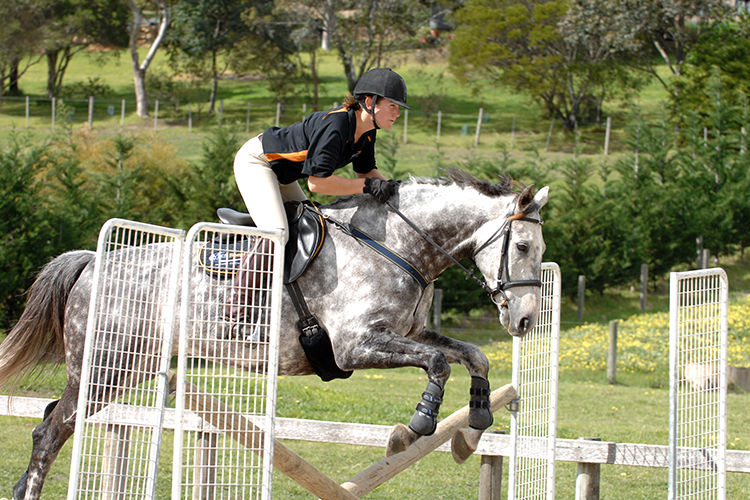
As part of her work as Amy’s coach, Michelle has formulated a strategy, using the different ages and stages of development of each of Amy’s horses…
“Amy has got five horses with her that she is riding, and we are using each of them for her to learn something different – right from a three year old to this World Cup horse. It’s right from the beginning trying to show her how to produce her horses so that they turn into athletes.”
read on
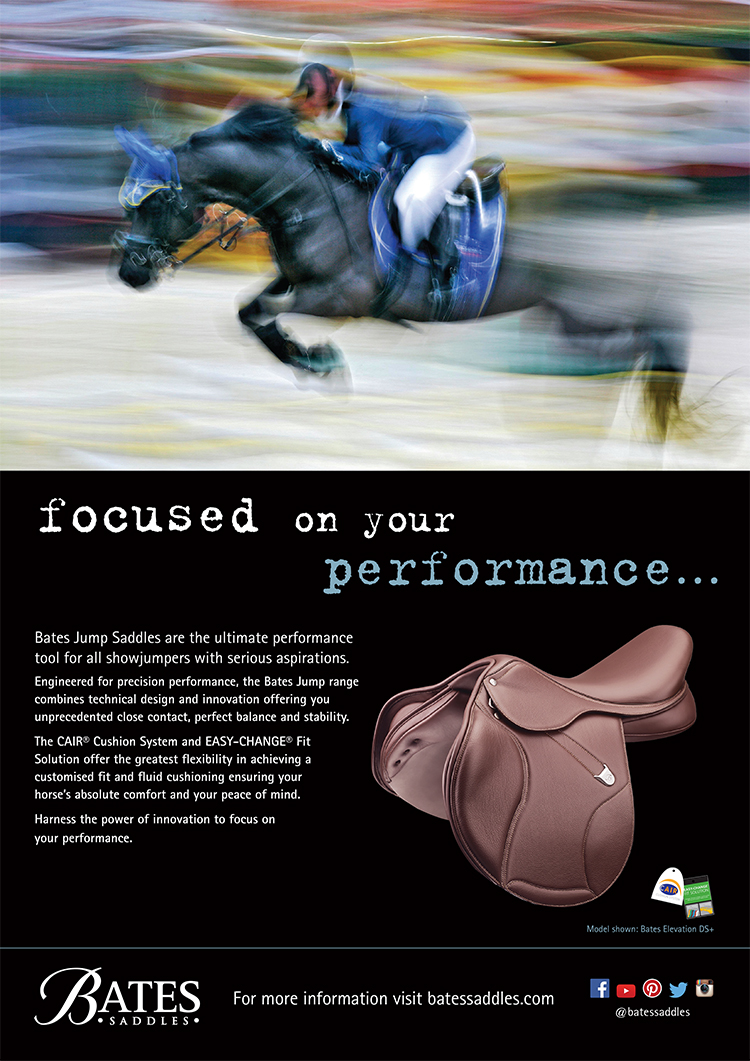
“Before she came to me, Amy was actually conscientious and worked quite hard on her flat work but it had no relationship to the jumping. The two pieces didn’t fit together. You’d do circles, but it didn’t have a purpose in trying to improve a horse’s weakness. If the horse was crooked, or it ran, or it was a little short in the canter, or too big in the canter – it never really connected the two pieces together.”
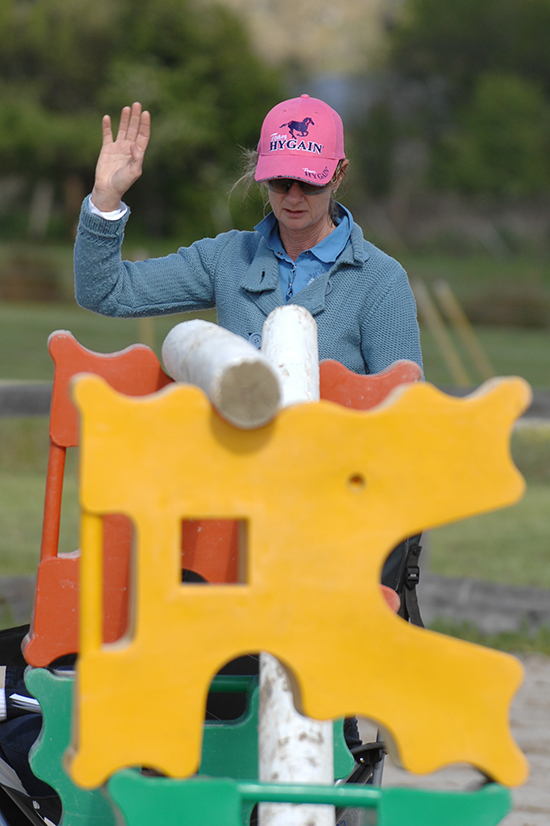
“What we’ve been focussing on, is getting Amy to recognize where the particular horse’s weakness lie, and where does it need to improve, connected to the problems she may have on course. What Amy is developing is a total connection between the way she rides the horse on the flat, and what she needs to get around a track. Now we’ve got her on the three year old, and she actually has to learn how to get a baby to go straight and start to acquire a contact by riding the horse forward to the bridle rather than bringing it back to her, so there is quite a lot of learning at this stage for her…”
“We don’t do any really complicated exercises with this horse. What I am really working on is Amy being able to keep a good rhythm, a good canter, to get down her lines and keep the horse straight. I’m not into a lot of little tricky exercises. This horse is a really careful jumper, he’s got a really good attitude, his weakest link is that he would jump a fence, jump a fence a little crooked, land, stay tight in the neck and go no-where – the last thing I want to do is make pokey little distances which are going to encourage that. I want him to actually jump through his body, land so he is travelling and stay through his body to get down the lines.”
“We try to ride lines where Amy has to think, and think about whether she does a long four or a short five, and work on her preparation to get to the fence. What happens if he stays short in the neck, short in the canter, is that she gets caught out when she comes round turns to a fence – and if he gets a bit short in the corner, then she has to chase him out of it, or she’d get caught a little backwards. It’s a matter of getting the canter she was getting on the circle, where it feels like it is travelling through his body so she can still get a good distance.”
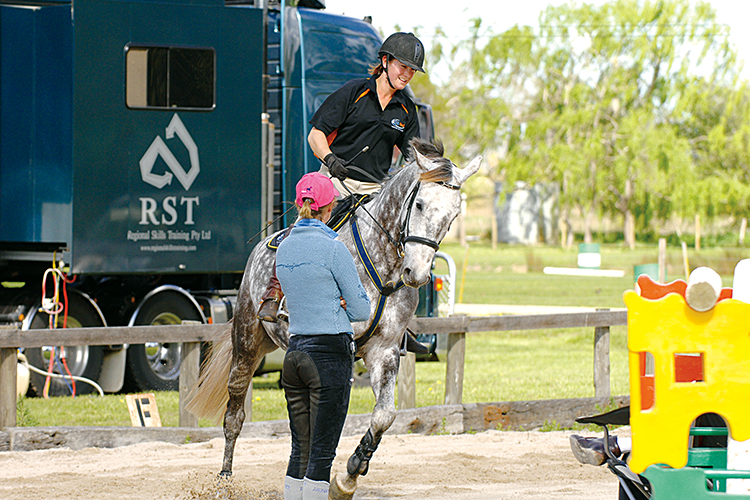
“So we worked on getting the canter bigger but went through a stage where she met a few fences a bit long and sloppy because she is just starting to get the feel of a horse covering ground, but still having the hind leg coming to the bridle. At first we got the horse to soften and go longer, but the hind leg was getting further and further away. They have to go through the process of bringing the hind leg further towards the bridle. That’s the main focus rather than saying, let’s do grids. We keep connecting the work we are doing on the flat, to the work over the jumps and letting one flow onto the other and back again…”
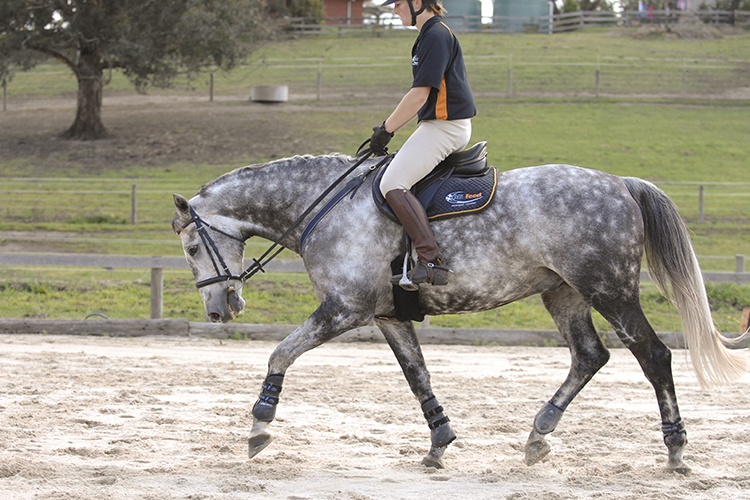
Find out how Amy selected Transatlantic below
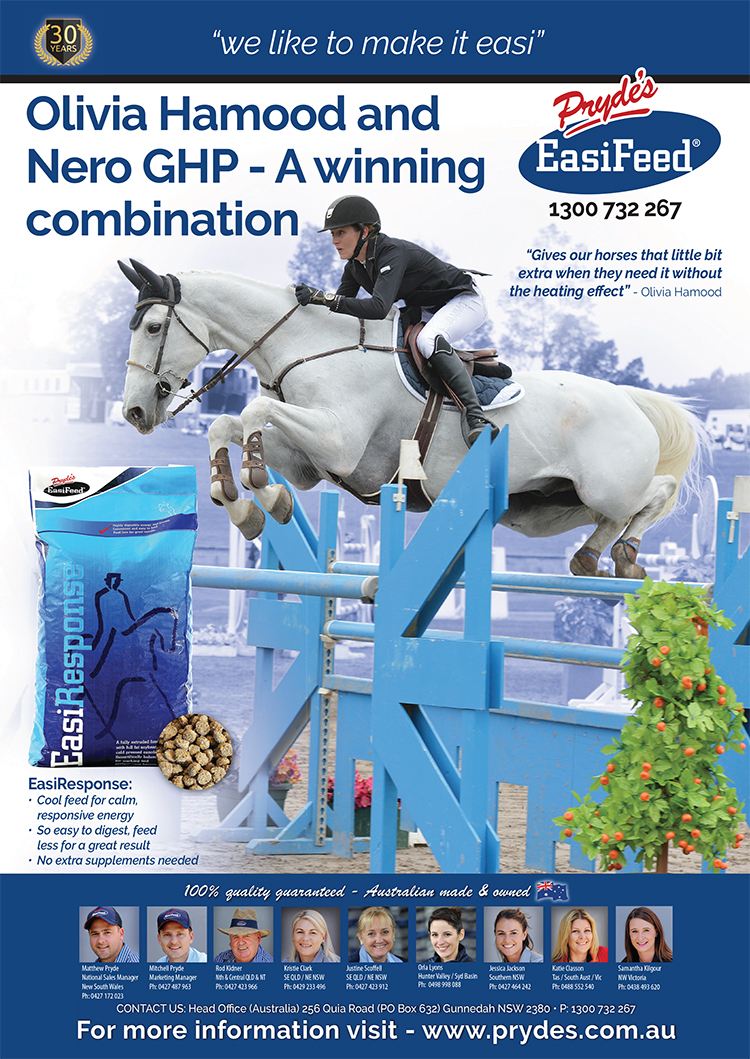
Amy Graham – Finding the horse
Amy found her world cup horse, Transatlantic in Europe…
“I found him in Willi Melliger’s stable in Switzerland. I looked at a number of stables in Switzerland before I found ‘Charlie’. He was the third horse I saw, and I was pretty sure that he was the horse. We just had to get a vet check that day because he was already sold to a stable in Germany.”
“I loved his attitude, that was the biggest thing. He just had a fantastic attitude and he felt like he loved what he was doing. He was the sort of in-between horse I was looking for in my move up to the more Warmblood type of horse. I’d been on some really hot horses and he had a lot of natural energy – but that day was the first day the ice had broken on the arenas, so he was very very fresh. As I’ve gotten to know him, I find he can lose a lot of motivation on the flat – and even jumping when he’s home but he’s got a lot of adrenalin in the ring. When he canters into the ring he just loves it.”
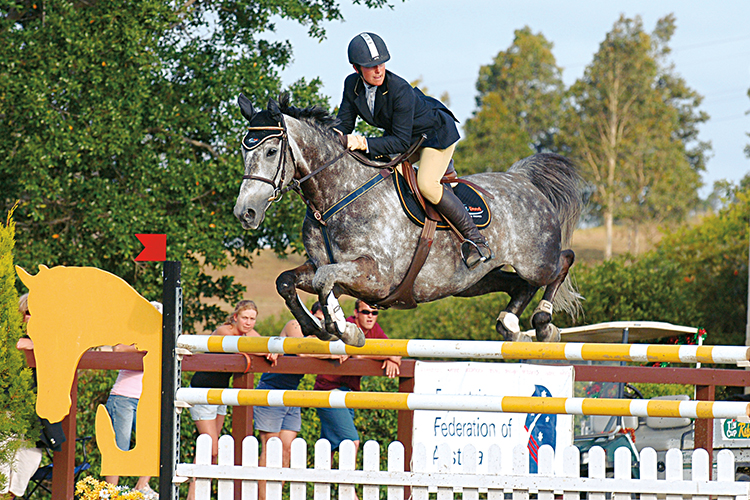
How long have you been working with Michelle?
“Almost a year. It’s been amazing learning how to produce horses on the flat – how to make athletes out of them. Working on their weak links and getting the most out of them. She’s a fantastic instructor, sure she is tough but you have to be tough…”
Who’s toughest, her on you, or you on you?
Amy laughs: “I don’t know. I find that with Michelle she has a great understanding of how you feel in the ring – she can really relate not just to how the horse is going, but how I am feeling emotionally… the pressure and all that stuff.”
In the working session this morning, you certainly got a huge change in his frame and his stride between the first five minutes and the last five minutes…
“Sure, but that’s what we’ve got to look for, getting the work we had in the last five minutes in the first five minutes, and his improvement in the last six months is huge. Every now and then we have another break through, and it won’t be long until he is travelling like that right from the start. Obviously his fitness plays a huge part in his motivation, especially at home. Because we have no shows it’s hard to get his fitness back – jumping fitness. I can’t jump at home because the ground is too hard. We are in the middle of a bit of a drought at home. Every now and then I can jump him but it’s great to be here at Michelle’s with a beautiful surface I can jump him on as often as we like. I’m hoping to get his fitness back up for when the shows do start… When there is a show! It’s great to school well and practice at home, and I know he is an amazing horse in the ring, so I don’t have to worry. No shows means that I can really work on my young horses and I’m really excited with them, I think they have real potential.”
This article first appeared in the February 2008 issue of THM.
Interested in breeding jumping horses? For the best European lines available in Australia, see the range of stallions on offer from International Horse Breeders.
Stallions like Kanndarco who combines the established line of Darco with the rising star, Kannan. Ring Glenis for more information: 03 5439 7251 email:sales@ihb.com.au or go to www.ihb.com.au
